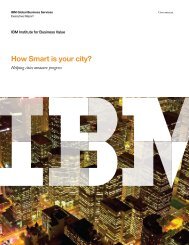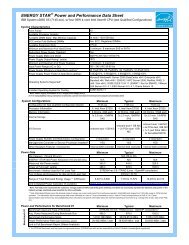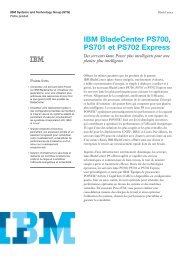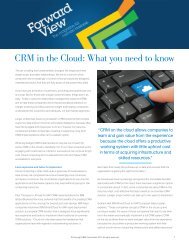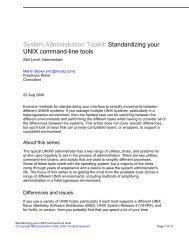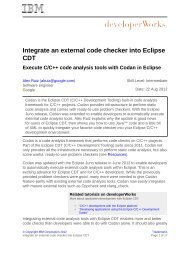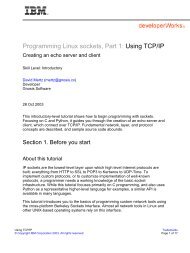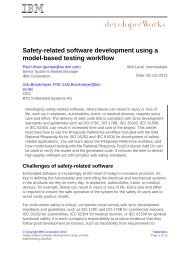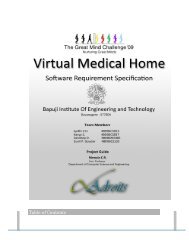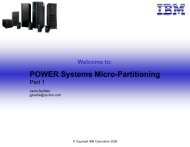TEC Workbook - IBM
TEC Workbook - IBM
TEC Workbook - IBM
Create successful ePaper yourself
Turn your PDF publications into a flip-book with our unique Google optimized e-Paper software.
<strong>IBM</strong> Software<br />
2.9 Summary<br />
In this lab, you learned:<br />
● That there are three service processing phases that occur each time a message arrives.<br />
The client-side processing performs all protocol related processing as well as shielding<br />
against a variety of malicious attacks. The service processing phase contains all of the<br />
specific rules and actions that you define. The server-side processing phase is where any<br />
backside protocol tasks are performed before the message is forwarded to the intended<br />
destination.<br />
● WebSphere DataPower configurations are built using a pure object-oriented design. Every<br />
configuration object, such as a SSL Proxy Profile or a Processing Policy, can be reused.<br />
● How to configure a Multi-Protocol Gateway service, along with an HTTP Front Side<br />
protocol handler, and a Processing Policy.<br />
● A Processing Policy contains a set of Processing Rules; each rule begins with a Match<br />
Action that is evaluated to determine whether the rule should be executed. Each<br />
processing rule contains a list of processing actions that are executed against the<br />
message.<br />
● Match rules can match on various aspects of a message, including the URL, HTTP<br />
headers, error codes, or an XPath that inspects the XML payload of a message.<br />
● Clicking the Save Config link in the top navigation area will save your running<br />
configuration (for your domain) to the flash memory. The running configuration and the<br />
saved configuration are independent.<br />
● How to add a schema validate action to the processing rule by dragging it from the action<br />
palette onto the processing rule. WebSphere DataPower appliances can perform schema<br />
validation against messages at near wire-speed, adding minimal latency to the overall<br />
transaction time.<br />
● SOAP requests and responses are automatically checked against a SOAP schema,<br />
assuring that the SOAP envelope is well-formed and correct.<br />
● Request and response XML documents are checked to assure they are well-formed.<br />
Malformed XML is rejected which assures backend applications receive only well-formed<br />
XML.<br />
● Custom Filters can be used for content-based message filtering and SQL injection threat<br />
protection.<br />
● How to transform an XML document using a Transform action.<br />
● XSD and XSL stylesheets are compiled and cached.<br />
Page 52 WebSphere Lab Jam



